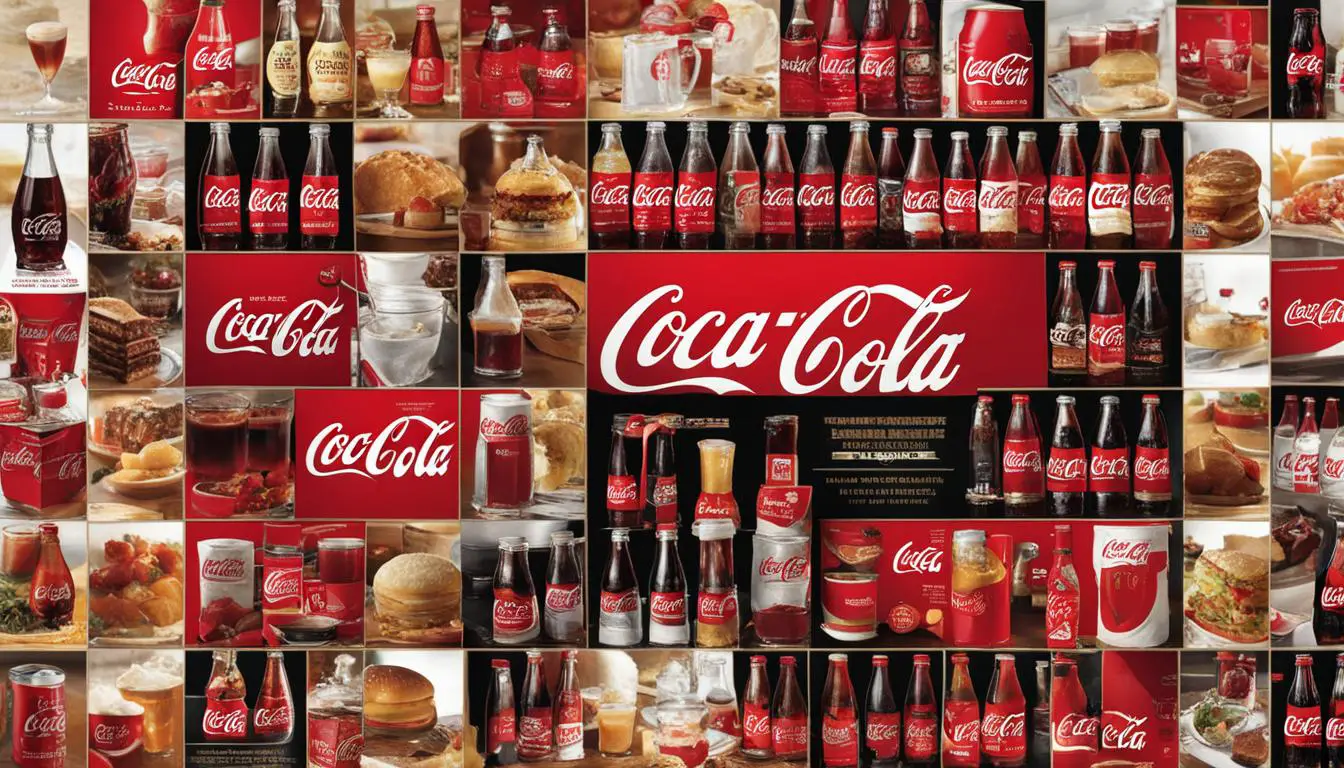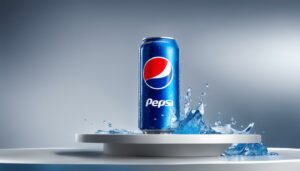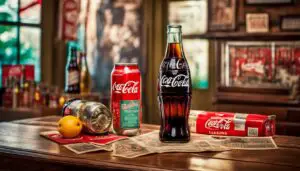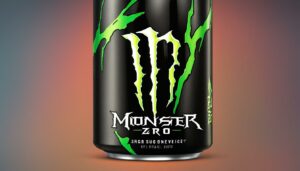Originally posted on November 5, 2023 @ 1:50 am
For more than 130 years, Coca-Cola has been a beloved beverage enjoyed by millions of people worldwide. Known for its distinctive taste, Coca-Cola has become an iconic brand and cultural symbol. However, over the years, the recipe for Coca-Cola has undergone several changes, leading to much controversy and speculation.
In this article, we will explore the history of Coca-Cola’s recipe, including the infamous moment when the company altered its formula and the public’s reaction to the change. We will also delve into the development of popular Coca-Cola products like Diet Coke and Coca-Cola Zero, as well as the brand’s commitment to innovation and adaptation.
Join us on this fascinating journey as we uncover the mysteries behind one of the world’s most recognizable brands.
Contents
- 1 The Birth of Coca-Cola and Its Original Recipe
- 2 The Classic Coca-Cola Taste
- 3 The Introduction of New Coke
- 4 The Backlash and Return of Coca-Cola Classic
- 5 The Secret Formula Revealed
- 6 Evolution of Coca-Cola’s Recipe
- 7 The Evolution of Coca-Cola’s Recipe: Diet Coke and Coca-Cola Zero
- 8 The Continued Popularity of Coca-Cola
- 9 Coca-Cola’s Commitment to Innovation
- 10 The Legacy of Coca-Cola
- 11 Conclusion
- 12 FAQ
- 12.1 When did Coca-Cola change their recipe?
- 12.2 What was Coca-Cola’s original recipe?
- 12.3 Why did Coca-Cola introduce New Coke?
- 12.4 What was the consumer reaction to New Coke?
- 12.5 When did Coca-Cola bring back Coca-Cola Classic?
- 12.6 Has Coca-Cola ever revealed its secret formula?
- 12.7 How has Coca-Cola’s recipe evolved over the years?
- 12.8 What are Diet Coke and Coca-Cola Zero?
- 12.9 Why is Coca-Cola still popular despite recipe changes?
- 12.10 How does Coca-Cola continue to innovate?
- 12.11 What is the legacy of Coca-Cola?
Key Takeaways:
- Coca-Cola has undergone several changes to its recipe over the years.
- The introduction of New Coke in 1985 caused a public uproar.
- Coca-Cola has developed several popular products, including Diet Coke and Coca-Cola Zero.
- Coca-Cola continues to innovate and adapt to changing consumer preferences.
- The legacy of Coca-Cola remains strong, despite recipe changes and competition.
The Birth of Coca-Cola and Its Original Recipe
Coca-Cola was invented in 1886 by John Pemberton, a pharmacist from Atlanta, Georgia. Pemberton intended to create a medicine that could cure headaches, nervousness, and other illnesses. He combined coca leaves and kola nuts, which were believed to have medicinal properties, with sugar syrup, caramel, and other ingredients. The resulting concoction was sold as a tonic and eventually became the world-famous soda we know today.
The original recipe for Coca-Cola included the following ingredients:
| Ingredient | Amount |
|---|---|
| Coca leaves | 1 oz. |
| Kola nuts | 3 oz. |
| Sugar syrup | 1 quart |
| Caramel | 1 oz. |
| Other ingredients | to taste |
Over the years, Coca-Cola’s recipe has undergone several modifications to improve taste and appeal to consumers. However, the original recipe remained a closely guarded secret, known only to a few top executives at the company.
The Classic Coca-Cola Taste

Coca-Cola’s classic taste is an iconic flavor that has remained a favorite of consumers for over a century. The original Coca-Cola formula, created by pharmacist John Pemberton in 1886, contained a secret blend of ingredients that gave the soda its distinctive taste.
Over the years, there have been several revisions to the formula, including a notable change in 1985, when the company introduced a new recipe for Coca-Cola, known as “New Coke.” This recipe change was met with intense backlash from consumers who preferred the original taste.
As a result of the negative response to New Coke, Coca-Cola brought back the original formula, now dubbed Coca-Cola Classic, just a few months later. Since then, the classic taste of Coca-Cola has remained largely unchanged, although there have been some smaller revisions to the formula to enhance the taste and meet changing consumer preferences over time.
The Recipe for Coca-Cola Classic
| Ingredient | Quantity |
|---|---|
| Carbonated water | Unknown |
| High fructose corn syrup | Unknown |
| Caramel color | Unknown |
| Phosphoric acid | Unknown |
| Natural flavors | Unknown |
| Caffeine | Unknown |
The recipe for Coca-Cola Classic remains a well-guarded secret, with only a few employees knowing the precise combination of ingredients that give the soda its unique taste. Despite efforts by competitors to replicate the formula, Coca-Cola’s classic taste remains unmatched.
While there have been changes to the formula over the years, the classic taste of Coca-Cola has remained a consistent favorite among consumers. The company’s commitment to maintaining the same formula and taste reflects its dedication to providing a high-quality product that consumers can trust and enjoy.
The Introduction of New Coke
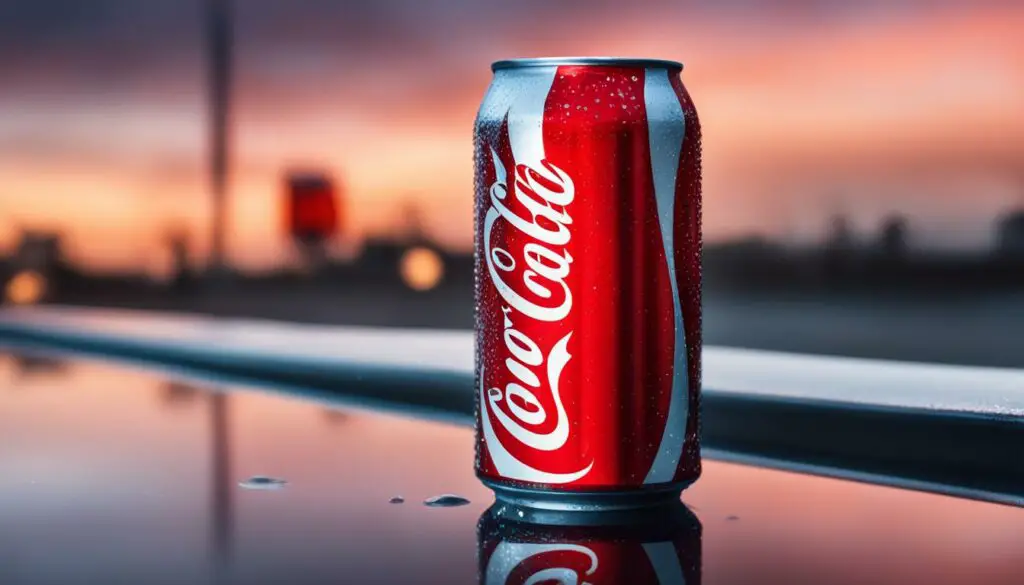
In the mid-1980s, Coca-Cola was facing stiff competition from its rival, Pepsi. To revive sales, the company decided to reformulate its signature drink, introducing a new recipe that was sweeter and smoother. The new formula, known as New Coke, was released in April 1985.
The decision to change the recipe was met with immediate backlash from the public, who were fiercely loyal to the classic Coca-Cola taste. Consumers flooded the company with complaints, and Pepsi even ran ads mocking the change, declaring “We have the original taste that they took away.”
In response, Coca-Cola quickly realized its mistake and within three months, the original formula was reintroduced as “Coca-Cola Classic.” The company continued to produce both New Coke and Coca-Cola Classic, but the former was eventually phased out due to poor sales.
Public Outcry Over Recipe Change
The move to change the formula for the iconic beverage was met with widespread criticism, with many consumers feeling that the brand was tampering with a beloved and long-standing tradition. The launch of New Coke was seen as a marketing disaster and a betrayal of consumer trust.
Despite Coca-Cola’s attempts to promote New Coke, consumers remained outspoken in their dislike of the new taste. Some even began hoarding cans of the original formula, causing prices to skyrocket on the secondary market. The consensus among critics and consumers was that the original recipe was simply superior.
“The introduction of New Coke was like having a friend betray you. You had a friend for 99 years, and they dropped you for a new one. And you can never forget that,” said Kaye Kessler, a former Coca-Cola employee.
The backlash against New Coke was so severe that it has since become a cautionary tale in the world of marketing and branding. The debacle demonstrated the importance of listening to consumer feedback and the risks involved in tampering with established brands and products.
The Backlash and Return of Coca-Cola Classic
Despite Coca-Cola’s confidence in the new formula, consumers were not convinced. The company’s phone lines were flooded with complaints from loyal fans who missed the original taste. Some even stockpiled cases of the old Coke, leading to spot shortages in certain regions.
Just months after its debut, the “New Coke” was officially a flop. The company announced the return of the original recipe, now called “Coca-Cola Classic,” and sales surged. In fact, many conspiracy theorists believe that the “New Coke” was just a ploy to boost sales of the original formula.
The Numbers Don’t Lie
A look at the numbers shows just how big of a misstep the “New Coke” was. According to a New York Times article from July 1985, Coca-Cola Classic had recaptured 60% of the market share in just a few weeks. The article also states that the company had “enraged” and “alienated” customers with the recipe change.
However, the “New Coke” was not a complete failure. According to a Today article, some consumers actually preferred the new taste and continued to buy it even after the original formula returned. This led to the creation of “Coke II,” which was made with the “New Coke” recipe and was eventually rebranded as “Coca-Cola Classic” in 1992.
Today, Coca-Cola Classic remains the company’s flagship product and the original recipe is still a closely guarded secret. But the “New Coke” debacle serves as a cautionary tale for companies considering changing their beloved products.
The Secret Formula Revealed

For over a century, the Coca-Cola Company has kept its secret formula under lock and key, sparking curiosity and speculation about its contents. While the recipe has undergone some changes over the years, the essence of the original formula remains the same.
“The formula for Coca-Cola is one of the most jealously guarded trade secrets in the world.”
According to the official Coca-Cola website, the formula is known to only a few select employees, who have taken a vow of secrecy. The recipe is stored in a vault in Atlanta, Georgia, which can only be accessed by a select group of authorized personnel.
The Coca-Cola Company has repeatedly stated that there is only one official recipe for Coca-Cola, and any rumors of alternative versions are unfounded. However, it is widely known that the recipe has been modified over the years to adapt to changing consumer preferences and to meet regulatory requirements.
The most significant modification to the recipe occurred in 1985 when Coca-Cola changed its formula to introduce New Coke. The backlash from consumers was so intense that the company was forced to reintroduce the original formula, now known as Coca-Cola Classic, just a few months later.
The Coca-Cola Recipe Adjustment Date
While the exact date of the recipe adjustment remains a closely guarded secret, it is believed to have taken place on April 23, 1985. This date is significant because it marks the day that the Coca-Cola Company announced the introduction of New Coke, signaling the end of the original formula.
Over the years, the Coca-Cola Company has made other modifications to the recipe, including the introduction of high fructose corn syrup as a sweetener in the 1980s and the reduction of sugar content in response to changing health trends.
Despite speculation and rumors, the Coca-Cola Company remains committed to keeping its secret formula confidential. For many consumers, the mystery of the formula only adds to the allure of this iconic brand.
Evolution of Coca-Cola’s Recipe
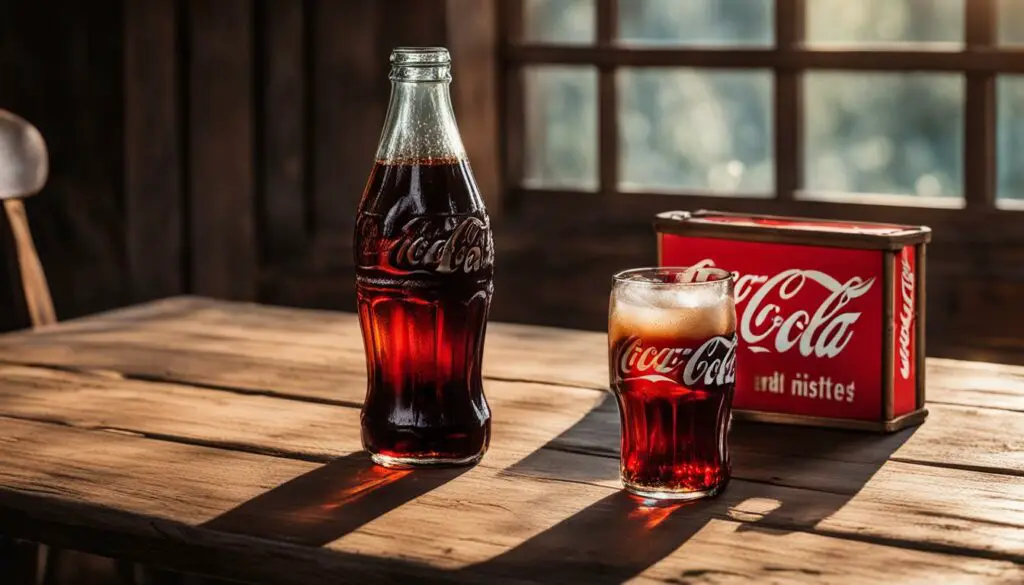
Since its creation, Coca-Cola has undergone many transformations in its recipe, adapting to changing consumer preferences and ingredient availability. Here’s a timeline of the most significant recipe changes:
| Year | Recipe Change |
|---|---|
| 1892 | First version of Coca-Cola created by John Pemberton. |
| 1903 | Caffeine added to Coca-Cola’s recipe. |
| 1915 | Coca-Cola’s iconic contour bottle introduced. Recipe remains unchanged. |
| 1929 | Coca-Cola becomes Kosher certified, requiring a slight alteration to its recipe. |
| 1941 | Sugar rationing during World War II causes Coca-Cola to implement a new recipe using high-fructose corn syrup instead of sugar. |
| 1985 | New Coke introduced, featuring a sweeter recipe that is widely disliked by consumers. Original Coca-Cola recipe reintroduced as Coca-Cola Classic. |
| 2005 | Coca-Cola releases Coca-Cola Zero, a calorie-free alternative with a taste closer to that of original Coca-Cola. |
| 2009 | Coca-Cola releases a new formula for Coca-Cola Zero, blending the taste of regular Coke with Zero’s calorie-free formula. |
| 2017 | Coca-Cola announces a new recipe for Diet Coke, with a flavor profile aimed at younger consumers. |
As you can see from the timeline, Coca-Cola has undergone many changes over the years, but its popularity as a refreshing and iconic beverage has remained strong.
The Evolution of Coca-Cola’s Recipe: Diet Coke and Coca-Cola Zero
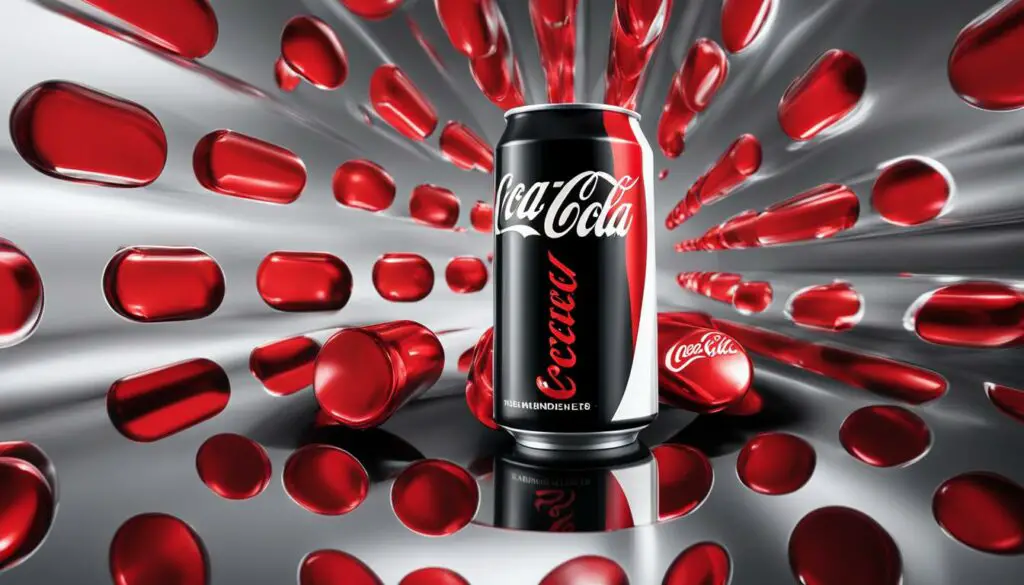
As the soft drink industry continued to grow and change, Coca-Cola adapted its recipe to meet the evolving tastes and preferences of consumers. In the 1980s, the company introduced Diet Coke, the first sugar-free cola that quickly became a popular alternative to the classic Coca-Cola. The new formula was made with a blend of synthetic sweeteners, including aspartame, and aimed to provide a similar taste experience to the original recipe.
In 2005, Coca-Cola once again introduced a new option for consumers with the launch of Coca-Cola Zero. This product was marketed as a no-calorie, low-sugar alternative to traditional cola, with a flavor profile designed to appeal to men. The company blended a variety of artificial sweeteners, including aspartame and acesulfame potassium, to create a unique taste that would appeal to consumers seeking a healthier option.
Despite some initial skepticism about the taste of artificial sweeteners, both Diet Coke and Coca-Cola Zero have become popular options for consumers. These products have allowed Coca-Cola to expand its product line and appeal to a wider range of customers with different taste preferences and health concerns.
The Impact of Recipe Changes
The introduction of Diet Coke and Coca-Cola Zero represents an important step in Coca-Cola’s history of recipe changes. By adapting its formula to meet changing consumer preferences for low-sugar and calorie-free options, the company has been able to maintain its position as a leading producer of soft drinks. However, these changes have also attracted criticism from some consumers who prefer the taste of the original recipe and are skeptical of the use of artificial sweeteners.
| Year | Key Recipe Change |
|---|---|
| 1982 | Introduction of Diet Coke |
| 2005 | Introduction of Coca-Cola Zero |
The Future of Coca-Cola’s Recipe
As consumer preferences continue to evolve, it is likely that Coca-Cola will make additional changes to its recipe and product line. The company has already experimented with natural sweeteners, including stevia and cane sugar, in some of its products, and may continue to explore these options in the future. However, any changes to the recipe will need to balance the desire for healthier options with the need to maintain the classic taste and appeal of Coca-Cola to its loyal customers.
The Continued Popularity of Coca-Cola
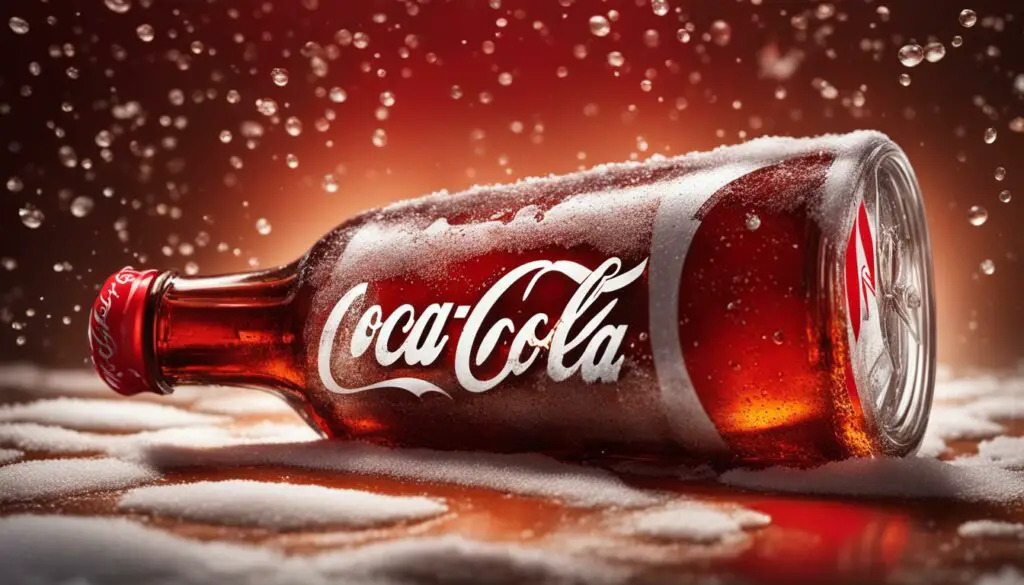
Despite changes to its recipe over the years, Coca-Cola remains one of the most popular and recognizable brands worldwide. A significant factor in its continued success is the brand’s ability to adapt and innovate over time, without losing sight of its core values.
Since its creation in 1886, Coca-Cola has refined its recipe and flavor profile, resulting in the iconic taste that consumers know and love today. The company has also introduced new products, such as Diet Coke and Coca-Cola Zero, to cater to changing consumer preferences.
The Coke Taste Transformation Timeline
To understand the evolution of Coca-Cola’s recipe over time, let’s take a look at the Coke taste transformation timeline:
| Year | Event |
|---|---|
| 1886 | The birth of Coca-Cola and its original recipe. |
| 1985 | The introduction of “New Coke,” which was met with a significant consumer backlash. |
| 1985 | Coca-Cola Classic is reintroduced and quickly regains its position as the brand’s flagship product. |
| 2005 | Coca-Cola Zero is introduced, providing a zero-calorie alternative to the classic formula. |
| 2013 | Coca-Cola Life is introduced, sweetened with cane sugar and stevia leaf extract. |
This timeline showcases the brand’s commitment to innovation, while also acknowledging the importance of its classic recipe and taste.
Despite challenges from competitors and changing consumer preferences, Coca-Cola has remained a household name. It is a testament to the brand’s ability to evolve while staying true to its roots.
Coca-Cola’s Commitment to Innovation

Coca-Cola has always been committed to innovation, and this is evident in their recipe changes over the years. From the original recipe to the introduction of New Coke and the development of Diet Coke and Coca-Cola Zero, the company has adapted to changing consumer preferences and market trends.
One major revision occurred in the late 1980s when Coca-Cola announced plans to change the formula for the first time in over 99 years. The new formula would be sweeter and smoother than the classic taste that the brand was known for. This change was met with significant backlash from the public, which led to the reintroduction of Coca-Cola Classic just months later.
Since then, Coca-Cola has continued to adapt its formula, but has learned from its past mistakes. The company now conducts extensive market research and taste tests before making any recipe changes, ensuring that consumer preferences are taken into account.
The Evolution of Packaging
In addition to recipe changes, Coca-Cola has also been innovative in the way it packages its products. In 2009, the company introduced the PlantBottle, which was the first fully recyclable PET plastic bottle made partially from plants. In recent years, Coca-Cola has also made efforts to reduce the amount of plastic used in its packaging, with a goal to use 50% recycled material by 2030.
Coca-Cola’s Future Innovations
Looking to the future, Coca-Cola has announced a goal to become a “total beverage company” by offering a range of drinks to consumers. This includes expanding their product line to include options like juices, teas, and sparkling waters. The company is also investing in new technologies, such as the development of a vending machine that can dispense hot and cold drinks.
Overall, Coca-Cola’s commitment to innovation has allowed them to remain a beloved brand for over a century. With a focus on both taste and sustainability, we can expect to see continued innovation from the company in the years to come.
The Legacy of Coca-Cola
Coca-Cola’s legacy is one that spans over a century and has left an indelible mark on popular culture. From its humble beginnings as a fountain drink in Atlanta, Georgia, Coca-Cola has become a global phenomenon, with its iconic logo and unmistakable taste ingrained in the minds of people all over the world.
Through the years, Coca-Cola has undergone several recipe changes, with each new iteration adding to the company’s rich history and enduring appeal. The taste transformation timeline of Coca-Cola is a testament to the brand’s commitment to innovation while maintaining the classic flavor that consumers know and love.
Despite recipe changes over the years, Coca-Cola remains one of the most popular soft drinks in the world, with a market share of over 40% in the United States alone. The brand has endured as a cultural icon, with appearances in movies, television shows, and advertisements cementing its place in popular culture.
One of the ways that Coca-Cola has maintained its relevance over the years is through its commitment to innovation. The company has consistently adapted to changing consumer preferences, introducing new products such as Diet Coke and Coca-Cola Zero to cater to a growing demand for healthier options.
The legacy of Coca-Cola is one that will continue to endure for many years to come. With a proud history of recipe evolution and a commitment to innovation, this iconic brand is sure to remain a beloved part of popular culture for generations to come.
Conclusion
Throughout its history, Coca-Cola has undergone several recipe changes and adaptations to suit changing consumer preferences. There were significant moments in the brand’s history, such as the introduction of New Coke, which caused a backlash among consumers. However, Coca-Cola Classic’s reintroduction proved that the original taste and formula were the factors that contributed to the brand’s success.
Despite evolving tastes and consumer preferences, Coca-Cola remains one of the most beloved brands globally. The company continues to innovate and adapt while holding onto its core values and secret formula, which has been a significant factor in its longevity and continued success.
As we explore the history of Coca-Cola and its recipe changes, it is evident that the brand has become a cultural icon that has left a lasting impact on society. From its humble beginnings in Atlanta, Georgia, to its global expansion, Coca-Cola has become a household name synonymous with refreshment and enjoyment.
In conclusion, while the recipe has undergone some changes over the years, Coca-Cola’s commitment to its secret formula and core values has ultimately contributed to its continued success. As the brand continues to innovate and adapt, it is poised to remain a beloved brand for years to come.
FAQ
When did Coca-Cola change their recipe?
Coca-Cola changed their recipe in 1985 when they introduced New Coke, but due to public backlash, they reintroduced Coca-Cola Classic just a few months later.
What was Coca-Cola’s original recipe?
The original recipe of Coca-Cola was a closely guarded secret, but it was said to contain a combination of carbonated water, sugar, caffeine, phosphoric acid, caramel color, and natural flavors.
Why did Coca-Cola introduce New Coke?
Coca-Cola introduced New Coke in an attempt to revitalize sales and compete with the growing popularity of rival products. They wanted to offer a sweeter taste that would appeal to a wider audience.
What was the consumer reaction to New Coke?
The consumer reaction to New Coke was overwhelmingly negative. Coca-Cola received thousands of letters and phone calls from upset customers who demanded the return of the original Coca-Cola taste.
When did Coca-Cola bring back Coca-Cola Classic?
Coca-Cola brought back Coca-Cola Classic in July 1985, just a few months after introducing New Coke. The return of the original formula was prompted by public demand and the decline in sales of New Coke.
Has Coca-Cola ever revealed its secret formula?
Coca-Cola has never revealed its secret formula, and it remains one of the most closely guarded trade secrets in the world. Only a few select individuals have access to the complete recipe.
How has Coca-Cola’s recipe evolved over the years?
Coca-Cola’s recipe has undergone various changes and adaptations over the years to accommodate changing consumer preferences and to introduce new products like Diet Coke and Coca-Cola Zero. However, the exact recipe remains a secret.
What are Diet Coke and Coca-Cola Zero?
Diet Coke and Coca-Cola Zero are sugar-free alternatives to regular Coca-Cola. Diet Coke was introduced in 1982 and is sweetened with artificial sweeteners, while Coca-Cola Zero was introduced in 2005 and has a taste closer to regular Coca-Cola but with zero sugar.
Why is Coca-Cola still popular despite recipe changes?
Coca-Cola remains popular due to its strong brand recognition, marketing efforts, and consistent quality. While recipe changes may have sparked controversy at times, the overall appeal and nostalgia associated with Coca-Cola have helped it maintain its popularity.
How does Coca-Cola continue to innovate?
Coca-Cola continues to innovate by introducing new flavors, products, and packaging options to cater to evolving consumer tastes and preferences. They also invest in research and development to create new beverage formulations.
What is the legacy of Coca-Cola?
Coca-Cola has a rich legacy that extends beyond its recipe changes. It has become a globally recognized brand and has left a significant impact on popular culture through its marketing campaigns, sponsorship of events, and iconic branding.

